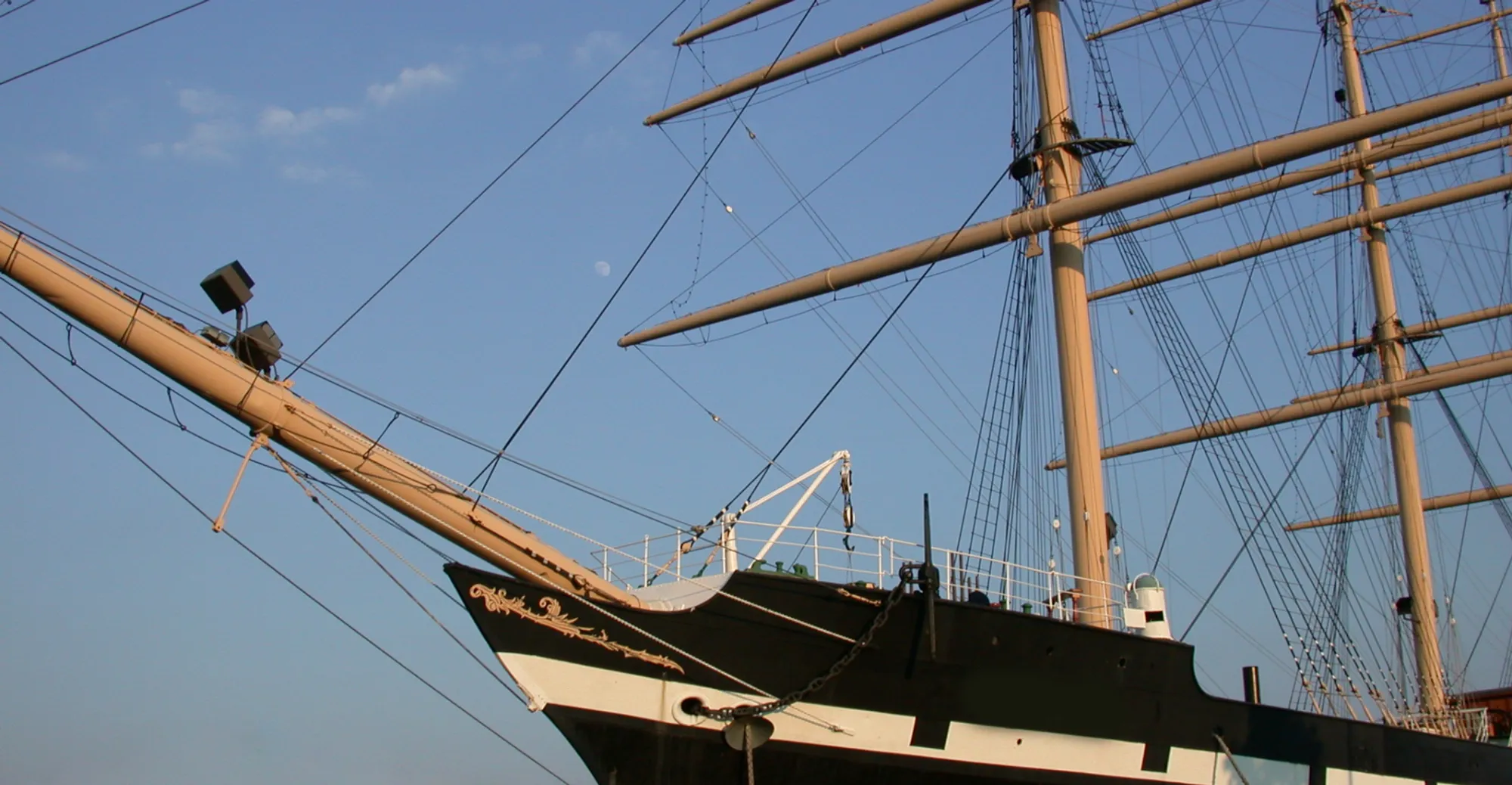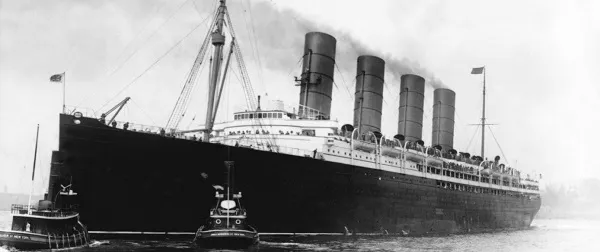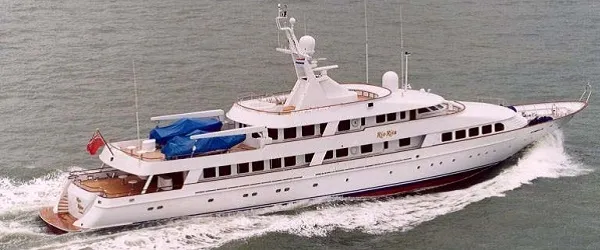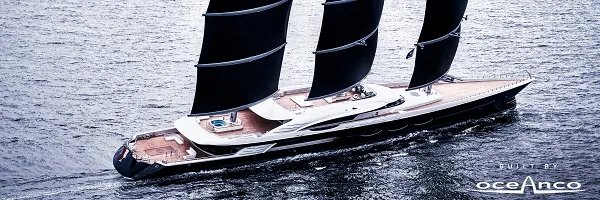
The Evolution of Maritime HVAC
The Evolution of Maritime HVAC
– by Jaap Bos, 18/02/2019 – updated 08/08/2024
A brief history of maritime HVAC technology: from old ‘pirates of the Caribbean’-style vessels to advanced superyachts, Jaap Bos takes you on a journey exploring the evolution of HVAC.
Imagine a world in which there is no heating, ventilation or air conditioning (HVAC); no way to freshen up a room and no air heating or cooling system to keep you comfortable.
Early 17th century: galleons

Until a few centuries ago, all boats were made of oak, pine and various other hardwoods. Wheelhouses didn’t have windows that needed demisting. In fact, there were no wheelhouses, just a big wooden wheel for steering on top of the deck.
Boats back then relied on the wind for both propulsion and ventilation: the wind would blow through cracks and crevices, bringing fresh air inside. This could be a boon for a crew on a boat in the Caribbean, say, lying in their hammocks with clothes clinging to their bodies while the whole place smelled like sweat. But it might be quite unpleasant for crews on vessels sailing in colder and harsher regions or seasons.
Nineteenth century: arrival of steel vessels

he industrial revolution changed the world, including the shipbuilding industry. Formerly built in wood, vessels were now made of steel and therefore more water and airproof. And just like that, ventilation became a priority. The first steel ships were equipped with natural ventilation systems supplied by goosenecks.
The arrival of steel wasn’t the only novelty. The arrival of electricity enabled mechanical ventilation through electrically driven fans. Propulsion shifted from sails to steam engines and eventually steam turbines, which needed fresh air with plenty of oxygen to keep the fire going – and so the engine room ventilation system made its entrance. Electric heaters increased the comfort level for occupants. On cold days, hot air could be transported around a vessel through a network of insulated ducts.
Twentieth century: introduction of air conditioning

The first modern cooling machine was produced in the early 20th century. This led to what would become one of the essential systems onboard any boat: air conditioning. This was the birth of heating, ventilation and air conditioning, or HVAC, as a discipline.
Although initially used mainly to keep meat and other perishable goods fresh on long voyages, the potential of air conditioning to improve onboard comfort quickly became apparent. Public rooms aboard ocean liners were air conditioned starting in 1931, and eventually many vessels would become fully air-conditioned.
The invention of air conditioning increased both comfort levels and air quality. Treating air enabled an indoor climate which prevented damage to the interior caused by damp, moist air.
Twenty-first century: information technology revolution

If you could name the invention that most changed the world over the last few decades, you would almost certainly choose the internet and information technology. The key to the magic has been connectivity: operational data for a boat can be accessed with a single swipe on a tablet. Just like this captain as he is preparing the yacht for owner arrival.
‘Owner is coming onboard in two hours, setting temperature in the main salon, dining and complete owners’ deck on 21 degrees. Note that the pressure difference of filter section AC-3 has reached 75%. Please put ‘cleaning filter’ on the next maintenance schedule.’
All systems are now monitored via computer screens in the engine control room. This includes parameters such as temperature, energy consumption and unit performance. Monitoring data shows exactly how many hours remain before an oil change or regular maintenance is needed. All of this contributes to more sustainable systems.
Information technology is rapidly changing our world, and helping the yacht building industry achieve everything from energy savings to remote access to onboard systems. Where will this lead to in the coming years?
Future Trends in Maritime HVAC
As the maritime industry moves towards a more sustainable future, HVAC systems are expected to undergo significant transformations. These changes will be driven by the need for energy efficiency, environmental responsibility, and enhanced comfort for crew and passengers. Below are some key trends that are likely to shape the future of maritime HVAC systems:
Increased Energy Efficiency:
- Smart HVAC Systems: The integration of advanced sensors and automation will enable HVAC systems to optimize energy use dynamically. Smart systems will be able to adjust temperatures and airflow based on real-time data, such as occupancy levels and weather conditions, reducing energy consumption without sacrificing comfort.
- Variable Refrigerant Flow (VRF) Technology: VRF systems, which allow for precise control of refrigerant flow to multiple indoor units, will become more prevalent. These systems are highly efficient, as they can simultaneously cool and heat different areas of the vessel, ensuring that energy is only used where it’s needed.
Adoption of Renewable Energy Sources:
- Solar-Powered HVAC: The maritime industry is exploring the use of renewable energy sources, such as solar power, to support HVAC systems. Solar panels installed on deck could provide supplemental energy to power HVAC units, particularly during daylight hours, reducing reliance on fossil fuels and lowering carbon emissions.
- Hybrid Systems: Combining traditional power sources with renewable energy, hybrid HVAC systems will offer a balanced approach to energy use. These systems will automatically switch between energy sources based on availability and demand, ensuring continuous operation while minimizing environmental impact.
Eco-Friendly Refrigerants:
- Natural Refrigerants: As global regulations tighten on the use of synthetic refrigerants due to their environmental impact, there will be a shift towards natural refrigerants like ammonia, CO2, and hydrocarbons. These alternatives have lower global warming potential (GWP) and are more environmentally friendly, aligning with the industry’s sustainability goals.
- Low-GWP Synthetic Refrigerants: Where natural refrigerants are not feasible, low-GWP synthetic options are being developed and implemented. These refrigerants offer a compromise by providing the necessary cooling power while reducing their environmental footprint.
Improved Air Quality and Filtration:
- Advanced Air Purification: With growing awareness of indoor air quality, future HVAC systems will incorporate advanced air purification technologies. These may include high-efficiency particulate air (HEPA) filters, ultraviolet (UV) light systems, and ionizers that can eliminate airborne pathogens, allergens, and pollutants, ensuring a healthier onboard environment.
- Humidity Control: Maintaining the right humidity levels is crucial for comfort and health. Future HVAC systems will feature improved humidity control, capable of adjusting moisture levels to optimal ranges, reducing the risk of mold growth and improving overall air quality.
Customization and Modularity:
- Modular HVAC Systems: The future will see an increase in modular HVAC systems, allowing for easier customization and scalability. These systems can be tailored to the specific needs of different vessel types, whether it’s a luxury yacht or a commercial ship, and can be easily expanded or modified as requirements change.
- User-Controlled Comfort Zones: Crew members and passengers will benefit from more personalized climate control options. Future HVAC systems will allow for the creation of individual comfort zones within the vessel, where occupants can adjust temperature and airflow to their preferences, enhancing overall comfort.
Data-Driven Maintenance:
- Predictive Maintenance: Leveraging data analytics and IoT (Internet of Things) technology, future HVAC systems will feature predictive maintenance capabilities. By continuously monitoring system performance, these systems can predict when maintenance is required, reducing the risk of unexpected breakdowns and extending the lifespan of the equipment.
- Remote Monitoring and Control: Operators will be able to monitor and control HVAC systems remotely through integrated software platforms. This will allow for real-time adjustments, diagnostics, and troubleshooting, reducing the need for on-site intervention and improving operational efficiency.
Conclusion
The future of maritime HVAC is set to be more sustainable, efficient, and adaptable than ever before. With advancements in technology and a focus on environmental responsibility, these systems will continue to play a vital role in enhancing comfort and operational efficiency on board vessels of all types. Heinen & Hopman is dedicated to leading this evolution through continuous innovation, ensuring that our HVAC solutions meet the highest standards of efficiency, reliability, and sustainability. Staying ahead of these trends will be key for shipowners and operators looking to optimize their vessels for the demands of tomorrow.
Jaap Bos | Senior Project Manager
Jaap Bos has been working at Heinen & Hopman since 1970. He started as an assistant engineer and worked his way up to senior project manager at our yachting department. Jaap is responsible for HVAC and sanitary systems in new build and refit projects at various superyacht shipyards in the Netherlands and abroad. He maintains customer and supplier relationships and is involved with the development of new technologies.